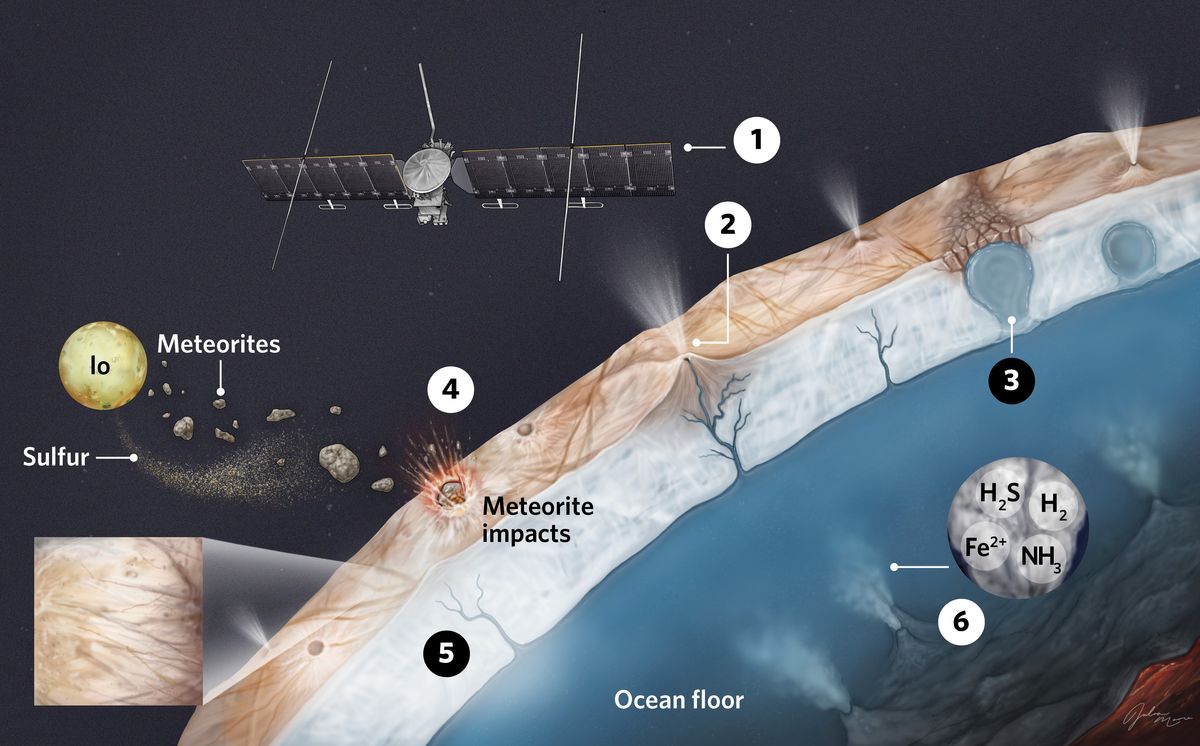Scientists suspect that the ice-encrusted Jupiter moon, Europa, is potentially inhabitable. Current data indicate that it likely has liquid water present under the ice, suggesting a heat source within the moon, and chemicals generated above and below the ice could provide the foundation for life. To investigate this moon’s environment, a team at NASA planned a mission to evaluate if this world has the necessary materials to sustain living organisms. With an array of scientific instruments, Europa Clipper will study the water, energy, and chemistry present on the moon.

1) Europa Clipper
Europa Clipper will use cameras that detect visible, infrared, and ultraviolet light to study the moon's surface. It will also study the moon using radar and magnetometry. Lastly, Clipper has two mass spectrometry instruments to survey the moon's chemistry. All of these instruments work together to give a full picture of Europa’s environment.
2) Plumes
If plumes are identified, scientists could study the molecular composition of the water by using mass spectrometry. This can narrow down the types of chemistry available for life on Europa.
3) Subsurface Lakes
Water trapped in the ice could form lakes. These may present sites for life to take hold, and if it is near enough for sunlight to reach, organisms could have evolved photosynthesis.
4) Europa's Surface
Jupiter's magnetic field irradiates Europa's surface. This could create oxidants important to living organisms by breaking apart water to generate oxygen or reacting with other molecules, such as sulfur deposited from Jupiter’s nearby moon, Io.
5) Mineral-rich Cracks
Cracks along Europa's surface indicate that there is geological activity on the moon that pulls sheets of ice apart. Some of these cracks are discolored, and scientists suspect that this results from debris from a water source below reacting with the harsh surface conditions. Researchers hope that Clipper will help answer what forms these features and what is in them.
6) Hydrothermal Vents
Heat and friction from the moon’s inner core maintain its liquid ocean and may create hydrothermal vents. The reaction between heated rock and cold ocean water produces many reduced metals and other reducing compounds that microorganisms on Earth use for chemosynthesis.
Read the full story.
